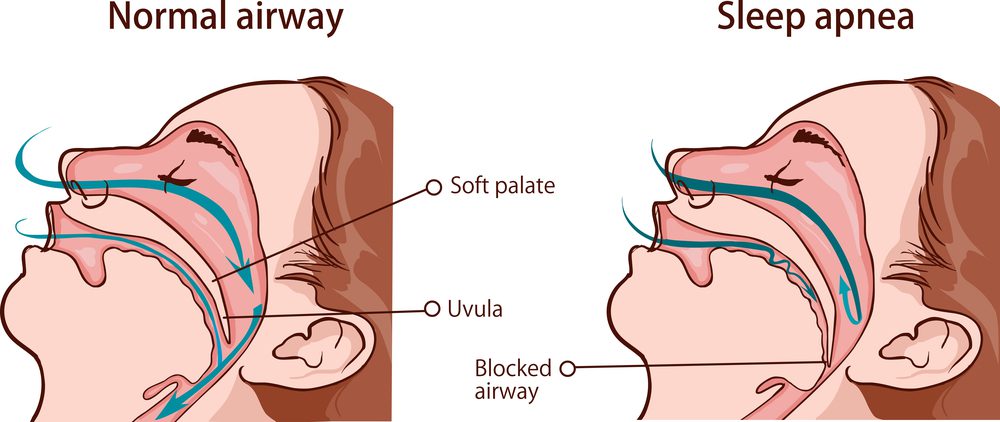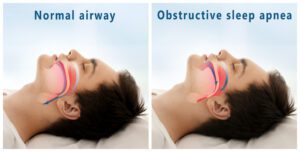Posted on July 10, 2023

Sleep apnea is a common disorder that affects millions of people worldwide. The condition causes interrupted breathing during sleep, leading to poor quality sleep and other health issues.
While orthodontic treatment is often known for straightening teeth, could it also help with sleep apnea?
Sleep apnea is typically treated with a Continuous Positive Airway Pressure (CPAP) machine, but some individuals find the device uncomfortable or inconvenient to use. As a result, alternative treatments are being explored to help those with sleep apnea.
Orthodontic treatment involves the use of appliances to realign the teeth and jaws. Recent research suggests that orthodontic treatment could be an effective solution for some individuals suffering from sleep apnea.
This article will explore the connection between orthodontics and sleep apnea, discussing the potential benefits and drawbacks of this treatment option.
Take the first step towards healthier, more restful sleep by scheduling a consultation with Smilebliss today.
Sleep apnea is a condition where a person’s breathing repeatedly stops and starts while they sleep. This can lead to a variety of health problems, including high blood pressure, heart disease, and stroke.
Recent research has revealed a link between sleep apnea and orthodontic treatment. By correcting misaligned teeth or jaw structure, orthodontic treatment can improve breathing during sleep and reduce the severity of sleep apnea.
This connection has led many people suffering from sleep apnea to consider orthodontic treatment as a potential solution to their condition.
Sleep apnea is a common sleep disorder that affects millions of people worldwide. It occurs when a person’s breathing is interrupted during sleep, leading to poor quality of sleep and daytime fatigue.
In this section, we’ll discuss sleep apnea and its types in detail.
Sleep apnea is a disorder in which the person’s breathing is repeatedly interrupted during sleep. It happens because the muscles in the back of the throat fail to keep the airway open, causing the person to wake up to take a breath.
It can lead to excessive daytime sleepiness, poor memory, and an increased risk of accidents.
 Obstructive Sleep Apnea (OSA)
Obstructive Sleep Apnea (OSA)Obstructive sleep apnea (OSA) is the most common type of sleep apnea. It occurs when the muscles in the back of the throat fail to keep the airway open, causing the person to stop breathing.
OSA is more common in men than in women and is often associated with snoring.
Central sleep apnea (CSA) is a less common type of sleep apnea that occurs when the brain fails to signal the muscles to breathe. This leads to a lack of oxygen in the blood and can cause the person to wake up. CSA is often associated with heart failure and stroke.
Complex sleep apnea syndrome (CompSA) is a type of sleep apnea that combines features of both OSA and CSA. It occurs when the person has both a breathing disorder and a central disorder.
It is more commonly seen in patients who have been treated with continuous positive airway pressure (CPAP) for a prolonged period.
Sleep apnea is characterized by disrupted breathing during sleep, leading to insufficient oxygen levels and poor quality of sleep.
Let’s explore the causes and contributing factors of sleep apnea.
One of the most significant factors contributing to sleep apnea is obesity. As body weight increases, the likelihood of the fatty tissues in the throat and neck pressing down on the airway increases.
This pressure narrows the airway and interrupts breathing patterns. Studies have shown that losing weight can significantly improve symptoms of sleep apnea.
 Men are more likely to develop sleep apnea compared to women. This is due to differences in airway anatomy.
Men are more likely to develop sleep apnea compared to women. This is due to differences in airway anatomy.
However, after menopause, women’s risk of developing sleep apnea becomes similar to men. As for age, as individuals get older, the muscles in the throat weaken, and the risk of developing sleep apnea increases.
The consumption of alcohol and sedatives increases the risk of developing sleep apnea. These substances relax the muscles in the body, including the throat muscles, which can result in the narrowing of the airway and disrupted breathing patterns during sleep.
Smoking can worsen the symptoms of sleep apnea. The chemicals in cigarette smoke irritate the tissues in the throat and cause inflammation, leading to the narrowing of the airway.
Additionally, smoking can cause fluid retention in the airway, which further increases the risk of sleep apnea.
Research has shown that genetics can play a role in the development of sleep apnea. Some individuals may have certain physical characteristics, such as a narrow airway or large tonsils, that can make them more prone to developing sleep apnea.
Additionally, research has also found that sleep apnea can run in families.
There are several orthodontic appliances that can be used to treat sleep apnea, including:
If you suspect that you have sleep apnea, it’s essential to consult with a medical professional. Your doctor may recommend a sleep study to diagnose the severity of your condition.
If you have mild to moderate sleep apnea, an orthodontist may be able to provide effective treatment options.
Orthodontic treatment can help improve sleep apnea by realigning the teeth and jaw. When teeth and jaw are properly aligned, the airway is opened and the individual can breathe properly, reducing or eliminating symptoms of sleep apnea.
This treatment can also improve overall oral health and correct bite issues. Some potential benefits of orthodontic treatment for sleep apnea may include better sleep quality, reduced snoring, increased energy, and an overall improvement in quality of life.
Seeking orthodontic treatment for sleep apnea can help individuals achieve healthier and more restful sleep
If you’re looking to improve your sleep quality and address sleep apnea, Smilebliss can provide you with effective orthodontic treatment options.
With our expertise in realigning teeth and jaw, Smilebliss can help open your airway and alleviate the symptoms of sleep apnea.
Take the first step towards healthier, more restful sleep by scheduling a consultation with Smilebliss today. Our dedicated team will guide you through the process and help you achieve the long-lasting benefits of orthodontic treatment.